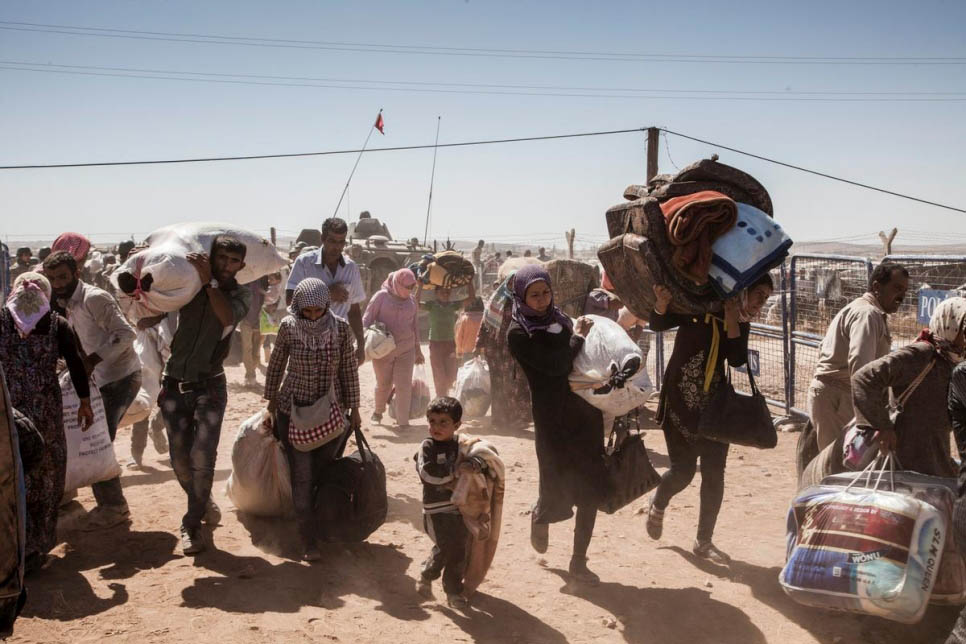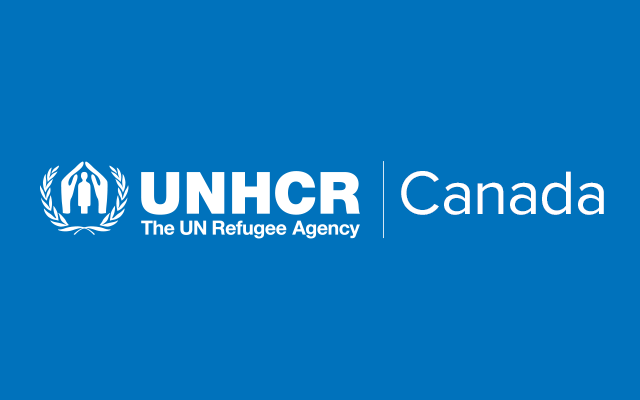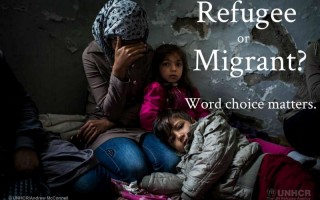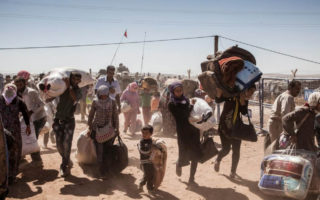
Syrian Kurdish refugees flee the war and cross into Turkey near the town of Kobani, Syria, in this September 2014 file photo. © UNHCR/Ivor Prickett
While the world has changed in the 65 years since the Convention was drawn up, UNHCR’s protection chief, Volker Türk, explains why it remains relevant today.
GENEVA – The 1951 Refugee Convention is the cornerstone of refugee protection and the work of UNHCR, the UN Refugee Agency. It defines a refugee as a person who has fled his country because of a well-founded fear of persecution on one of five grounds: race, religion, nationality, membership of a particular social group or political opinion. As UNHCR releases its new Guidelines on International Protection today (December 2), Assistant High Commissioner for Protection Volker Türk discusses with Global Website Editor Tim Gaynor how it still applies in today’s world.
Q: According to the 1951 Convention, isn’t a refugee defined as someone who is specifically targeted, not someone who is fleeing generalized violence?
A: The 1951 Refugee Convention was drafted in the wake of the Second World War at a time when you had massive population movements in Europe. We had about 60 million people on the move as a result of persecution, as a result of conflict, as a result of violence – just in the Forties. So you can imagine that the drafters of the Convention knew very well what they had in mind and who they had in mind in order to protect for the future. It was clear that the definition applies to people who flee persecution because of what happened to them in their individual type of circumstances, but it also meant that it applies to people who flee armed conflict and violence.
Assistant High Commissioner for Protection Volker Türk explains how the 1951 Refugee Convention remains relevant today.
Let’s not forget that most situations of violence and conflict specifically target civilians in certain circumstances – they target minorities, they target opposition groups who are in civilian areas. So there is this element of clear linkage between the refugee definition of persecution, conflict and violence. That’s what the guidelines are trying to address – to actually show that the refugee definition as contained in the 1951 Convention applies to people fleeing armed conflict and violence. And what we see in the definition today is as relevant as it was when it was crafted in the wake of the Second World War.
Most people who flee the conflict in Syria, for example, would be recognised under the 1951 Convention. With over 1,000 different armed groups and the absence of state protection, it is clear that there is a compelling case to be made for refugee recognition under the Convention. But, quite frankly, almost each and every conflict that we’re dealing with today would make the case for the 1951 Convention.
Q: People fleeing armed conflict are granted some form of protection. Is there a need for them to be recognized as refugees?
It is important for the credibility of the international refugee protection regime to ensure that those who flee persecution, be it in armed conflict situations or not, are properly identified as such and granted the protection they deserve and they require. This is why we have consistently argued that if people flee conflict and violence, they generally fulfil the criteria of the definition and should be recognised as such.
Q: Can’t people living in armed conflict can just move to another part of the country or a safe zone?
This is a concept that the lawyers call ‘internal flight’ and, indeed, some people look at the situation in the whole of a country and identify areas where conflict does not take place. We look at this from two perspectives. First of all, it needs to be physically possible for the person to reach that part of the country that is safe. And then it needs to be reasonable for the person to stay there.
For instance, in Iraq you already have millions of displaced people, people who have lived in extremely difficult circumstances – the same in Afghanistan. So if you already have a huge group of people who flee to a particular part of the country because it is safe, some of them may not be able to get on with their lives because there are huge problems with absorption capacities, access to health, access to education, and access to safety in many instances.
So we obviously need to look at the real situation of people and whether it is possible for them to safely go to another part of the country and whether its possible for them to survive there. In some instances, yes, it is possible, and in other instances it is not. If it is not, then refugee protection is the best way of survival.
Q: Doesn’t broadening the definition of who is a refugee weaken the status and protection that comes along with it?
What the new guidelines actually show is that it is not about a broadening of the refugee definition. It is really about explaining and updating our understanding of the definition in today’s context. As I mentioned, the drafters of the 1951 Convention knew what it meant for people to flee war and violence, and they knew very well because they came out of the Second World War. They knew what persecution meant because of the atrocities that were committed during this time. They knew what it meant to be a refugee and that understanding is also an understanding that applies today. Because as long as the realities of war, violence, human rights abuses and persecution are not addressed, we will need this definition of refugees as a lifeline for protection. What the guidelines are doing is to bring forward the understanding amongst states and judiciaries that the definition that was drafted then is as relevant today as it was at the time.
Read a Briefing Note on the new guidelines.
Article originally posted on unhcr.org





